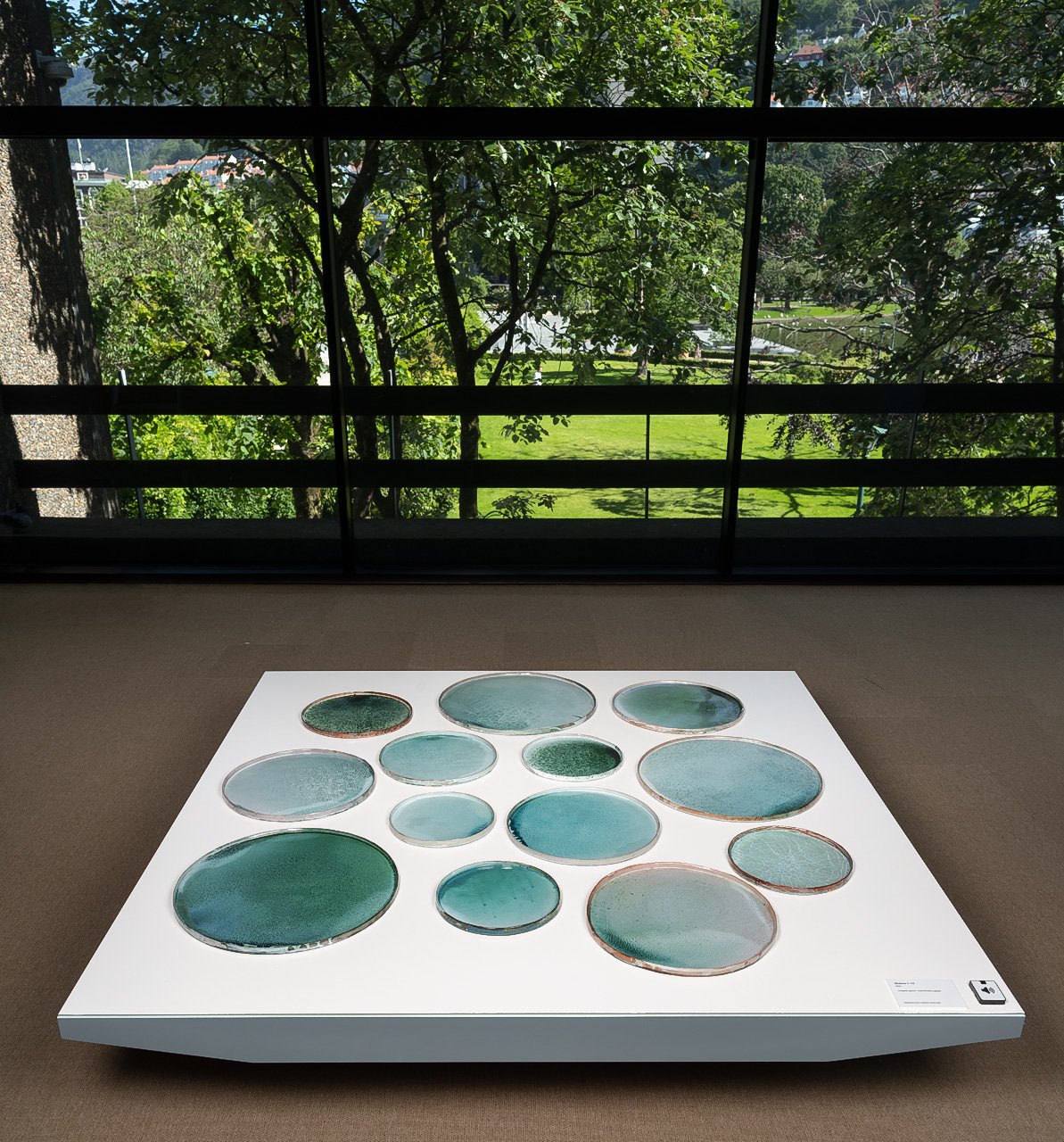Material Statements: A Visit to Nina Malterud’s Solo Exhibition in Kode, Norway
Yvonna Demczynska tells of her visit to ceramicist Nina Malterud’s exhibition at Kode museum in Bergen, Norway
I have been admiring Nina Malterud’s ceramics since the first time I saw her oval wall pieces about nine years ago, at Collect on the Format Gallery stand. I was thrilled when Nina agreed to showcase her wonderful ceramics at Flow Gallery.
Nina is one of the most accomplished ceramic artists I know. She has been a prominent figurehead of Norwegian art since the 1970s, when she became a key artist in the “new ceramics” movement. Her genre-defying work continues to captivate, moving between the realms of craft and fine art.
Nina has achieved widespread and distinguished recognition, both in Norway and internationally. Just this August, she was duly rewarded in August by HM the King of Norway with a Knighthood of the 1st class of the Royal Norwegian St. Order of Olav for her achievements in art and education. Earlier in 2022, Nina received the highest Norwegian Prize – the Ulrik Hendriksens Ærespris 2022 – with a financial award of 250000 Norwegian Krone (approx. £22,000).
Four years ago, Kode, a highly prestigious museum in Bergen, Norway, invited Nina for a solo exhibition. The exhibition features over 150 works, spanning her illustrious, 50-year career from 1975 to present.
I was delighted that with the help of the Norwegian Embassy in London I could visit the exhibition. In fact, I visited on the penultimate day of the four-month long retrospective.
The design of the exhibition was carefully planned by Nina and the exhibition architects, to guide viewers through every stage of her career. The large room was divided into different sections, showcasing a variety of approaches and techniques.
As you enter the large exhibition space, the text introduction gives an evocative picture of her practice:
Nina Malterud has been working with ceramics for nearly fifty years. From the day she established herself as an artist, she has been a key figure in setting the agenda in her field. She played an active part in the reorientation that took place in the 1970s, which led to a reappraisal of ceramics and crafts and their acceptance as art forms. Today, her own art moves effortlessly between categories such as crafts and fine arts.
In her early years, Malterud made mostly cups and pots, before gradually moving on to larger vessels and decorative objects. She drew inspiration in particular from the ceramics of the Minoan culture and the Nordic Iron Age, but she also gives a nod to Norwegian rosemaling (rose painting) in some of her floral motifs. After the turn of the millennium, Malterud continued with earthenware, but with a freer approach. Today, she prefers to work with surfaces in smaller formats that frequently allude to classic ceramic products such as tiles, tablets and dishes.
Fired to a temperature of 1,060 degrees Celsius, powdered glaze turns to liquid glass. Glazes applied layer upon layer interact with each other in the course of multiple firings to produce images and patterns. Using this approach, objects can be reformulated countless times. Cracks and gaps in the glaze can be fatal errors, yet they can also become features in a complex and mercurial idiom. Some of Malterud’s surfaces prompt associations to skin and vulnerability, others suggest the processes of nature or the weather. Most of her works, however, can be regarded as purely abstract art. In the artist’s own words: “I strive for an expression that has physical presence yet without narrative.”
I wish this exhibition would tour to the UK – especially as the response to Nina’s work at Flow has been tremendous! We at Flow look forward to presenting more of her work to UK audiences, and hope many will have the opportunity to see her pieces.







